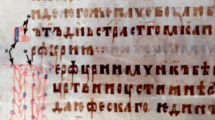Abstract
Corundum is a crystalline form of aluminum oxide (Al2O3) and is one of the rock-forming minerals. When aluminum oxide is pure, the mineral is colorless, but the presence of trace amounts of other elements such as iron, titanium, and chromium in the crystal lattice gives the typical colors (including blue, red, violet, pink, green, yellow, orange, gray, white, colorless, and black) of gemstone varieties. The starting point for our work is the quantitative evaluation of the concentration of chromophore chemical elements with a precision as good as possible to match the data obtained by different techniques as such as optical absorption photoluminescence. The aim is to give an interpretation of the absorption bands present in the NIR and visible ranges which do not involve intervalence charge transfer transitions (Fe2+ → Fe3+ and Fe2+ → Ti4+), commonly considered responsible of the important features of the blue sapphire absorption spectra. So, we developed a method to evaluate as accurately as possible the autoabsorption effects and the secondary excitation effects which frequently are sources of relevant errors in the quantitative EDXRF analysis.





Similar content being viewed by others
References
Burns RG (1993) Mineralogical applications of crystal field theory, 2nd edn. Cambridge University Press, Cambridge, p 127
Nassau K (2001) The physics and chemistry of colour. Wiley, New York, p 143
Fontana I, Le Donne A, Palanza V, Binetti S, Spinolo G (2008) Optical spectroscopy study of type 1 natural and synthetic sapphires. J Phys Cond Matter 20:125–228
Levin IH (1913) Synthesis of precious stones. The J Ind Eng Chem 5:496–500
Laudise RA (1986) Hydrothermal synthesis of crystals. C&EN 28:30–43
Bonizzoni L, Galli A, Milazzo M (2000) Direct evaluation of self-absorption effects in dark matrices by Compton scattering measurements. X-ray Spectrom 29:443–448
Milazzo M (2004) Radiation applications in art and archaeometry: X-ray fluorescence applications to archaeometry. Possibility of obtaining non-destructive quantitative analyses. Nucl Instrum Methods Phys Res B 213:683
Pradyot Patnaik (2002) Handbook of inorganic chemicals. (McGraw-Hill)
Shiraiwa T, Fujino N (1966) Theoretical calculation of fluorescent X-ray intensities in fluorescent X-ray spectrochemical analysis. Jap J Appl Phys 5:886–899
WINQXAS User Manual
deVries JL, Vrebos BAR (1993) Quantification by XRF analysis in infinitely thick samples in handbook of X-ray spectrometry. Methods and techniques, Van Grieken, M (eds), New York
McClure DS (1962) Optical spectra of transition-metal ions in corundum. Phys Rev 36:2757
Author information
Authors and Affiliations
Corresponding author
Rights and permissions
About this article
Cite this article
Bonizzoni, L., Galli, A., Spinolo, G. et al. EDXRF quantitative analysis of chromophore chemical elements in corundum samples. Anal Bioanal Chem 395, 2021–2027 (2009). https://doi.org/10.1007/s00216-009-3158-1
Received:
Revised:
Accepted:
Published:
Issue Date:
DOI: https://doi.org/10.1007/s00216-009-3158-1




